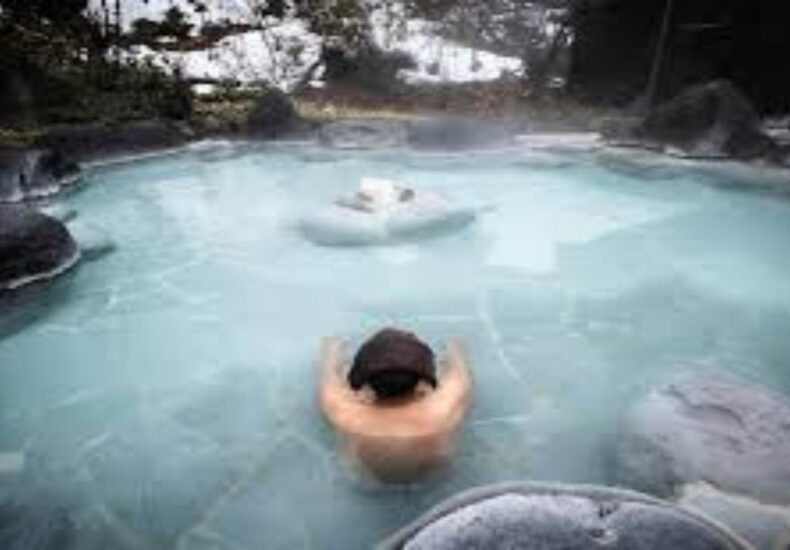
Stepping Into the Steam: My First Onsen Experience in Japan
Fundacion Rapala -It was a cold February afternoon in northern Japan. Snow lay stacked high outside the onsen locker room as I hesitated, peeling off layers of winter clothing. Clutching a towel, I stepped cautiously into the steam-filled bathing area. Although I was surrounded by naked strangers, no one seemed to notice or care. This wasn’t just a bath. It was a lesson in vulnerability, tradition, and cultural immersion.
The Journey North: From Tokyo to Hokkaido
My adventure began on the bullet train from Tokyo to Hokkaido, Japan’s northernmost island. Snow-covered landscapes and quiet rural towns blurred past my window. As a solo traveler on a budget, I found accommodation above a cozy café run by Michiko, a warm-hearted woman in her sixties. During dinner one night, she casually suggested, “Shall we go to the onsen?” I smiled politely, though inside I felt a mixture of anxiety and anticipation.
“Read More : Trump Declares End to Gaza War During Historic Visit to Israel”
Ancient Waters: The Soul of Japanese Bathing Culture
Onsen natural hot springs rich in minerals are steeped in history. These baths are referenced in the Kojiki, Japan’s oldest chronicle from the 8th century. Originally used for purification rituals and healing, onsen evolved over centuries. Particularly during the Edo period, they shifted from sacred sites to social hubs, similar to Roman bathhouses. Today, there are over 3,000 onsens across Japan. Most offer both indoor (uchiyu) and outdoor (roten-buro) pools and must follow strict water regulations.
Mbracing the Awkward: How I Overcame the Fear of Nudity
Understandably, the idea of bathing nude with strangers was daunting. However, once I stepped into the bath, I noticed that everyone else seemed perfectly at ease. According to bathhouse expert Stephanie Crohin, who moved to Japan from France, “Nobody is watching or judging you. They’re focused on their own relaxation.” Over time, I began to believe her. Eventually, my self-consciousness faded into the mist.
“Read More : Belichick Denies Exit Reports: “Categorically False” Claims”
Onsen vs. Sentō: Know the Difference
While both involve communal bathing, onsens and sentō are not the same. Onsen use naturally heated geothermal water, often in scenic rural areas. Conversely, sentō are public bathhouses that use heated tap water and are typically located in urban neighborhoods. Stephanie Crohin fell in love with sentō for their sense of community and body positivity. “It’s the only place where insecurities simply disappear,” she explains.
Modern Traditions: Tattoos, Rules, and Respect
Navigating onsen etiquette can be overwhelming at first. For instance, tattoos are traditionally associated with organized crime in Japan, so many onsen still prohibit them. However, things are changing. For example, Hoshino Resorts now allows tattoos, showing growing cultural flexibility. Regardless, respect remains paramount. Guests must wash thoroughly before entering the baths, avoid loud behavior, and keep towels out of the water. These shared rules maintain the peaceful environment.
A Night in Hakodate: Where the Magic Happened
That evening, Michiko and I drove through snow-covered streets to a glowing onsen on Hakodate’s outskirts. After paying around 500 yen, we entered the women’s section. Inside, bathers sat on low stools, calmly washing. I copied their actions, still nervous. Nevertheless, when I finally slipped into the hot spring under the stars, something shifted. The snowflakes fell gently as strangers chatted about life. I felt a sense of belonging I hadn’t expected.
Why You Should Try It Too
Yes, it’s intimidating at first. But visiting an onsen isn’t merely about soaking in hot water it’s about stepping outside your comfort zone. For many, it becomes a meditative, even transformative, experience. As Crohin says, “You might leave with a new sense of freedom, rarely found in a world obsessed with perfection.” Personally, I did and every visit since has reaffirmed that truth.